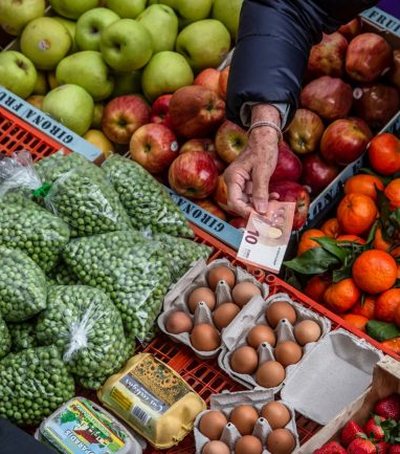
Today is the International Day for the Elimination of Violence against Women and for this reason, hundreds of organizations around the world have strongly protested against violence, which, for the sake of truth, has high numbers. Every year, in Albania, IPH publishes data on violence against women, as well as reports on the factors that lead to the development of this violence.
The United Nations General Assembly in 1999 designated November 25 as the International Day for the Elimination of Violence against Women and invited governments, international organizations and NGOs to organize public awareness activities on the issue.
On this date, a 16-day campaign known as "16 Days of Activism Against Gender-Based Violence" takes place. This campaign begins on November 25, International Day for the Elimination of Violence against Women, and ends on December 10, International Human Rights Day.
Every year the campaign calls for global action that raises awareness of preventing and eliminating violence against women and girls.
For a long time, impunity, silence and stigma have allowed violence against women to escalate on a large scale, with one in three women worldwide experiencing lifelong violence.
Violence against women and girls is one of the most widespread, persistent and destructive human rights violations worldwide. Gender inequality persists worldwide. Achieving gender equality and empowering women and girls will require stronger efforts, including the legal framework, to combat gender-based discrimination, which often results from patriarchal attitudes and social norms.

16 important facts about violence against women
Fact 1: 70% of women experience physical and / or sexual violence from their intimate partner at some point in their lives
The World Health Organization study, conducted in several countries, on women's health and domestic violence (physical, mental and sexual violence) against them, showed that intimate partner violence is widespread in many societies.
Fact 2: Violence against women can be predicted and prevented
Levels of violence against women are not the same in all countries and at all times. By identifying the social, cultural, legal, and economic factors that influence this violence, it is possible to predict its occurrence and understand how to prevent it. School programs to prevent violence, reduce the dangerous use of alcohol, change social and cultural norms through education and raise awareness, and intervene in abused children to avoid their later involvement in violence can reduce violence. to women.
Fact 3: Violence against women can harm women's health and well-being
Mental health consequences from intimate partner violence and sexual violence include depression, post-traumatic stress disorder, anxiety, suicidal ideation, and substance abuse. Physical health consequences include injury, chronic pain syndrome, gastrointestinal disorders, and disability. Violence can lead to unwanted pregnancies, gynecological problems and forced abortions. Women who suffer from intimate partner violence have general poor health for a longer period of time than women who have not been affected by this violence.
Fact 4: Violence against women can harm the health and well-being of children
Experiencing violence from a close partner can impair the normal development of children in the family. Studies have shown that children exposed to parental violence have more social, emotional, behavioral and general health problems than children from families where there is no violence between partners.
Fact 5: Violence against women increases the likelihood of becoming infected with HIV
Studies from several countries show that violence against women increases the risk of HIV infection. A recent study of young women in South Africa showed that women with HIV negative, who had experienced close partner violence or high levels of gender inequality in their relationships with men, were 51% more likely to get HIV over the next 2 years.
Fact 6: Violence against women is an obstacle to achieving some of the Millennium Development Goals (MDGs)
The review of the 2010 Millennium Development Goals showed that progress in achieving the Millennium Development Goal 4 for child mortality and the Millennium Development Goal 5 for maternal / maternal mortality is very slow. Achieving these goals has been hampered by violence against women. It is estimated that 1 in 4 women worldwide is physically or sexually abused during pregnancy, usually by her partner. Violence against pregnant women is associated with a risk of miscarriage, premature birth and fetal distress, as well as low birth weight. Violence against women is also a cause of maternal / maternal death. Efforts to reduce maternal and child mortality should include measures to reduce sexual violence against women by the intimate partner.
Fact 7: Violence against women seriously affects economic development
Intimate partner violence has a significant economic impact. In the United States, for example, the estimated costs of intimate partner violence amount to $ 5.8 billion a year. These include direct costs for medical services (about 2/3 of total costs), as well as indirect costs such as loss of productivity.
Fact 8: Men who have been victims of childhood abuse are 3-4 times more likely to commit violence against their intimate partner
Studies suggest that exposure to childhood violence increases the likelihood of committing violence against an intimate partner by 3 to 4-fold, compared to those who are not exposed to childhood violence.
Fact 9: Harmful use of alcohol by men increases the likelihood of violence against a partner
Some studies, conducted in low- and middle-income countries, show that people who abuse alcohol are 1.6 to 4.8 times more likely to commit violence against their intimate partner than men who do not abuse alcohol.
Fact 10: Sexual violence is widespread in post-conflict, post-conflict and violent displacement areas
In armed conflict, the breakdown of social support structures for families and communities, as well as the disruption of services, leave women and children at risk of sexual violence, including rape and sexual exploitation. Women can succumb to sexual abuse because of the need for food and other basic necessities of life. Rape has been used to mistreat and insult civilians, as a war tactic, even in times of ethnic cleansing.
Fact 11: Programs that increase women's access to microcredit and train people in healthy relationships and bargaining skills can prevent violence against women
A program called Microfinance Intervention for AIDS and Gender Equality in South Africa showed great success. The program targets women living in poorer households in rural areas, and combines financial services with women and men HIV and men prevention training sessions, gender norms, cultural beliefs, communication, and partner violence. Two years after the end of the program, participating women reported 55% fewer acts of violence than their intimate partners.
Fact 12: School curricula on violence can prevent violence against women
Secure Data is a school and community initiative that targets girls and boys ages 13-15 in the United States. The program addresses gender norms and equality early in life, before stereotypes develop. It includes a program of 10 training sessions for support service providers, as well as a theater. A program evaluation found that participants reported less psychological abuse and sexual and physical violence against their current partner one month after the program ended, as well as four years later.
Fact 13: Engaging men and boys in preventing violence against women and promoting gender equality can have positive effects
Studies show that the main causes of violence against women include harmful male norms and acceptance of violence as a social norm. Surveys show that men and boys are more likely to report violence against their partners, so it is necessary to work with them on gender equality to reduce violence against women. A number of interventions promoting gender equality with men and boys have shown success.
Fact 14: The World Health Organization provides guidance on how to implement evidence-based programs to prevent sexual violence against women by intimate partners
The World Health Organization and other partners have developed a handbook "Preventing Sexual Violence Against Women by an Intimate Partner: Taking Action and Creating Evidence," which summarizes existing evidence on the risks of violence against women and programs aimed at preventing it. .
Fact 15: The World Health Organization has developed recommendations to support health workers to address the consequences of sexual violence
Për të ndërtuar kapacitetet e punonjësve të shëndetit për mbështetjen e viktimave të dhunës seksuale, Organizata Botërore e Shëndetësisë dhe partnerët e tjerë kanë zhvilluar një kurs në internet për ofruesit e kujdesit shëndetësor për “Menaxhimin klinik të përdhunimit” dhe “Udhëzime për kujdesin mjeko-ligjor për viktimat e dhunës seksuale”. Ky kurs ka për qëllim përmirësimin e shërbimeve shëndetësore për viktimat e dhunës seksuale, duke pajisur ofruesit e kujdesit shëndetësor me njohuritë e aftësitë e nevojshme për kujdesin ndaj viktimave të dhunës seksuale.
Fakti 16: Organizata Botërore e Shëndetësisë mbështet kërkime mbi kuptimin dhe parandalimin e dhunës seksuale
Violence against women has been identified as a major public health and human rights problem, but the lack of reliable data on the causes, magnitude and consequences of the problem slows the search for solutions. To collect such data, the World Health Organization launched a study in several countries on women's health and domestic violence against them. The World Health Organization also helps coordinate the Sexual Violence Research Initiative, a network of researchers, policymakers, activists and donors dedicated to understanding and preventing sexual violence.





